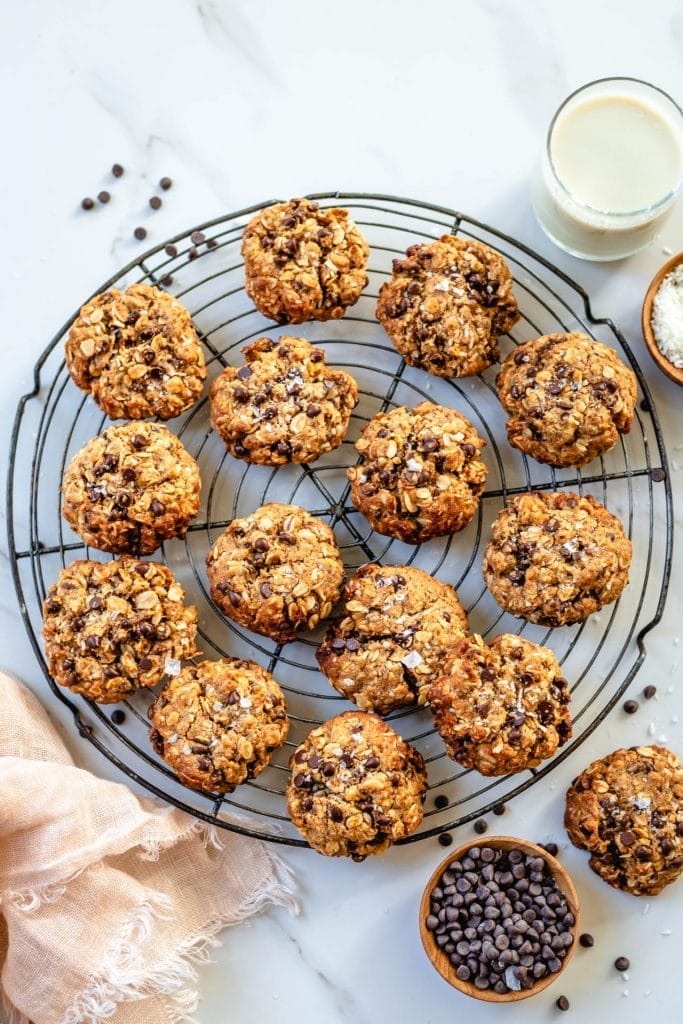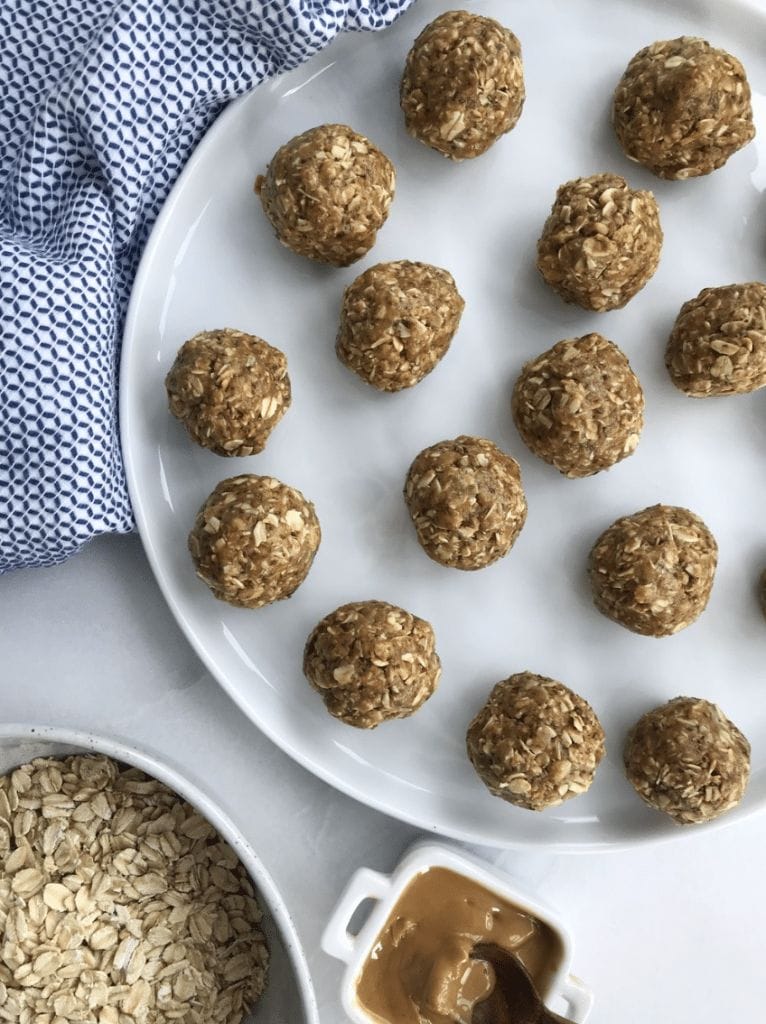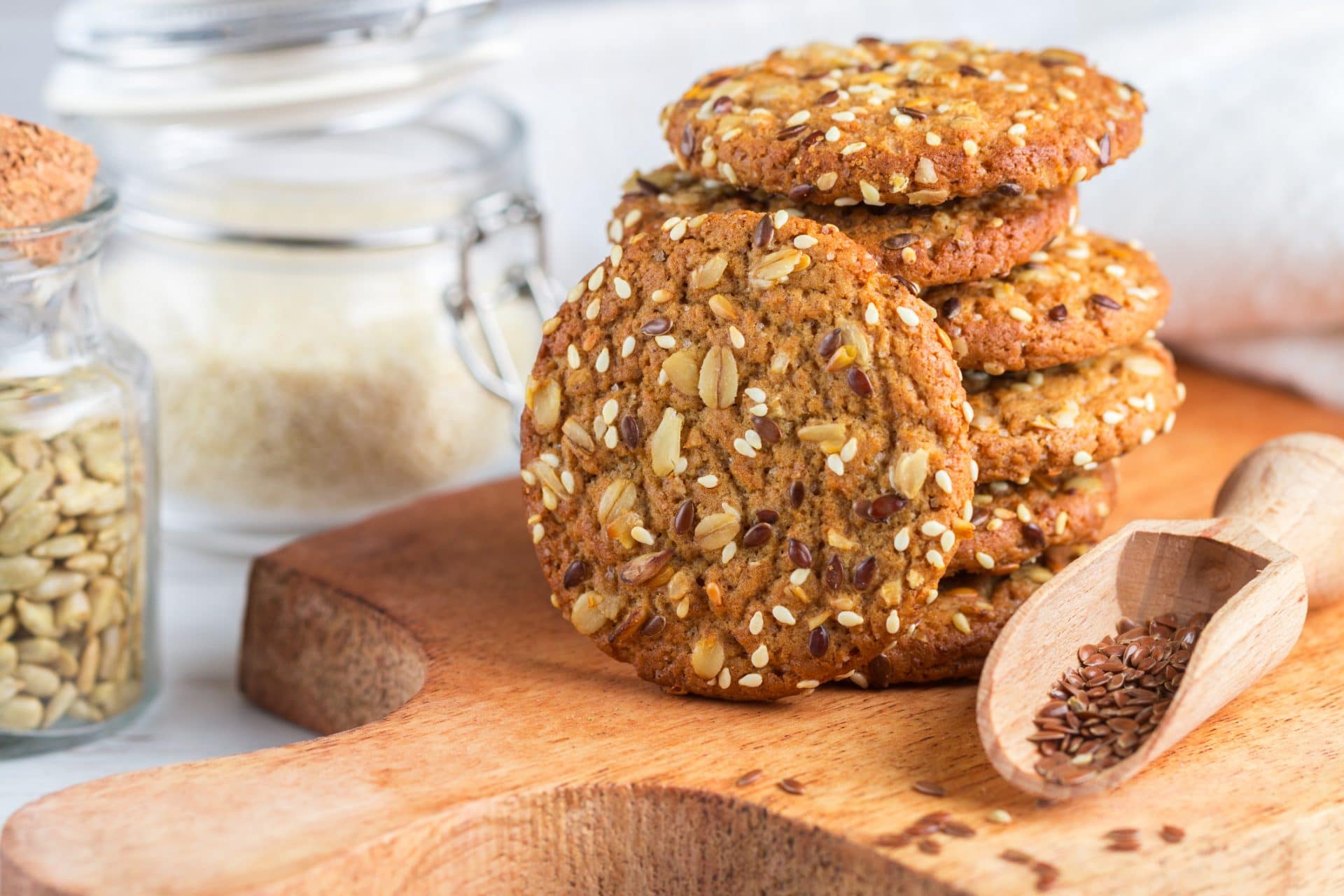We are proud to say that these posts are not sponsored. Our editorial team of Bobbie moms and writers personally select each featured product. If you buy something through our links, we may earn an affiliate commission, at no cost to you.
If your baby’s feeding journey includes breastfeeding or chestfeeding, you’ve likely had a panic or three about keeping up your milk supply. Being solely responsible for producing your child’s every meal can be, well, draining, to say the least.
And whether you’re just trying to meet demand or stock up on extra milk for feeding your baby at work, plenty of parents turn to lactation cookies to help them boost their nutrients to increase their body’s milk production.
But do lactation cookies work, and are they really necessary? We spoke with Jadah Parks Chatterjee, Registered Nurse, International Board-Certified Lactation Consultant and Bobbie Medical Advisor, to get the low-down on lactation cookies.
What are Lactation Cookies?
Lactation cookies are small cookies packed with vitamins and nutrients to help keep breastfeeding, and chestfeeding parents nourished while their bodies work (overtime) to produce milk. Think more oats and flaxseed, less white sugar and chocolate (though, yes, also necessary at times). The cookies are also formulated to contain special compounds known as galactagogues.
Galactagogues are substances that increase milk production. They range from medications to herbs and even food ingredients. They have been used throughout history and across numerous cultures to stimulate breast milk production and help breastfeeding parents produce more milk.
But, lactation cookies aren’t just useful for making milk. When breastfeeding, you’ll need an extra 300 to 500 calories per day to produce milk. Lactation cookies offer your body the nutrient-dense calories it needs, plus essential vitamins and minerals which can be passed on to your baby.
Do Lactation Cookies Work?
The jury is still out on whether lactation cookies are truly effective in stimulating milk production. However, as we previously mentioned, there is some evidence to support the claim that certain galactagogues like brewer’s yeast, fenugreek, and blessed thistle can help increase milk production in breastfeeding mothers.
Just know that galactagogues can affect people in different ways (they might work for you, but not your best friend, for instance)—it’s about trial and error.
While lactation cookies may not be necessary for all breastfeeding parents, they can be a helpful tool for those struggling with low milk production. If you’re considering using lactation cookies to support your milk supply, speak with a lactation consultant or other healthcare professional to ensure they’re the right fit for you.
What are the Active Ingredients in Lactation Cookies?
The active ingredients in lactation cookies are typically galactagogues like:
- Oats
- Flaxseed
- Brewer’s yeast
- Fenugreek
Ultimately, even if lactation cookies aren’t directly supporting your milk quantity, they can still improve your milk quality—thanks to the nutrients packed inside.
However, a simple web search can lead you down a deep rabbit hole of lactation cookie recipes, which can be overwhelming if you just want a quick fix.
We asked Chatterjee about which ingredients to look for before breaking out your mixer.
- Oatmeal: “Oatmeal is a soluble fiber, packed with vitamins, minerals, protein, and antioxidants,” says Chatterjee. “It can increase the hormone prolactin, which supports increased milk volume and production.” It’s also a healthy, filling snack that can provide a soothing effect on the body, thanks to all the magnesium and B vitamins.
- Flaxseed: Flaxseed contains essential micronutrients such as magnesium, calcium, potassium, phosphorus, zinc, copper, and selenium, as well as phytoestrogens, a plant compound that can influence milk supply. “Flaxseed is also a great source of DHA and EPA, which is passed through human milk to your baby and supports growth, development and sustainment,” says Chatterjee.
- Fenugreek: Fenugreek is an aromatic spice found to increase milk supply in some lactating parents, but not all. It has a mild galactagogue effect that’s a result of the herb working to increase sweat gland production—and because mammary glands are similar in structure, it can increase their production as well. Though be forewarned: because fenugreek is an aromatic spice, you may start to develop a mild, sweet maple syrup smell.
- Brewer’s Yeast: While not a true galactagogue, brewer’s yeast is a stellar source of B vitamins, which are key players in energy production—and highly necessary for nursing parents.
Recipe 1: Best home-made lactation cookies

This vegan lactation cookie recipe is from Hannah Sunderani, founder of Two Spoons blog.
Ingredients
- 1 1/2 cup old-fashioned rolled oats
- 3/4 cup all purpose flour
- 2 1/2 tbsp brewers yeast
- 1 1/2 tbsp ground flaxseeds
- 1/4 tsp baking powder
- 1/4 tsp baking soda
- 1/4 tsp ground cinnamon
- 1/4 tsp fine sea salt
- 1/2 cup vegan butter
- 3/4 cup coconut sugar
- 1/4 cup maple syrup
- 1 tsp vanilla
- 1/2 cup semi-sweet chocolate chips (vegan)
- 1/4 cup shredded coconut
1. Preheat the oven to 350F/180C. Line two baking sheets with parchment paper. In a small mixing bowl, combine the oats, flour, brewers yeast, ground flaxseeds, baking powder, baking soda, cinnamon and sea salt. Mix to combine.
2. In a large mixing bowl, cream together the vegan butter and coconut sugar with a hand mixer on medium speed, approx. 1 minute. Pour in the maple syrup and vanilla and mix again on medium speed to combine.
3. Add the dry ingredients to the mixture, bit-by-bit, then mix to combine with a spatula. Add the chocolate chips and shredded coconut. Mix again.
4. Roll the cookies into balls (about the size of a golf ball) and place them on baking sheets. Press down with your fingers to flatten slightly. (If the dough is too sticky for rolling, pop it in the fridge to chill for 10 to 20 minutes). Bake cookies for 10-12 minutes, or until golden on the bottom and lightly golden on top. Transfer to a cooling rack and let cool completely.
Recipe 2: No-Bake Lactation Energy Bites

This vegan cookie recipe is from Ali Maffucci, mom of four and founder of Inspiralized.
- 2 1/4 cups old-fashioned oats
- 1/2 cup ground flaxseed
- 3 tablespoons brewer’s yeast
- 1 cup peanut butter or almond butter
- 1/2 cup honey
- 1 teaspoon vanilla
1. Add all ingredients to the bowl of an electric mixer fitted with the paddle attachment. Mix on low speed until mixture is well combined and can easily be formed into smooth balls. If you don’t have an electric mixer, use a hand mixer or a spoon and a large bowl to your best ability.
2. Roll mixture into 2-tablespoon-sized smooth balls and place on a parchment-lined baking sheet.
3. Place in the refrigerator for 30 minutes or enjoy right away. Once the bites have set, transfer them to an air-tight container and store in the refrigerator for up to 2 weeks or freeze.
Will certain foods negatively affect breast milk supply?
There aren’t many foods to avoid while nursing unless your baby develops a sensitivity to something in your diet. Even eating parsley and sage and sipping peppermint tea here and there will not drastically affect your breast milk supply (regardless of what that internet forum said!).
In terms of milk supply, stress is the number one offender. In the early weeks when you’re attempting to establish a supply, suffering from lack of sleep and adjusting to life with a new baby, this new stress can cause your cortisol levels to rise, negatively impacting your supply and making feeding somewhat frustrating. It’s a vicious cycle.
The takeaway when it comes to lactation cookies
Lactation cookies are a smart way to keep your body nourished and encourage your milk supply naturally. In addition to keeping up with nutrient-dense snacks, you’ll also want to make sure you’re getting enough water and sleep and remaining as stress-free as possible to keep up your breast milk production.
We know that’s sometimes easier said than done, especially with an infant. If you’re struggling, reach out for support. You’ve got options: A lactation consultant can be an excellent resource for questions and suggestions, and supplementing with formula also can help take some of the pressure off.
Verified by Jadah Parks Chatterjee, BS, RN, IBCLC, Nurse, Lactation Consultant and Bobbie Medical Advisor.
Sources:
Here’s how the “lactation” cookie crumbles | Pavilion for Women
Breastfeeding Foods to Increase Breast Milk | Verywell Family
4 factors that can decrease breast milk supply – and how to replenish it | UT Southwestern

